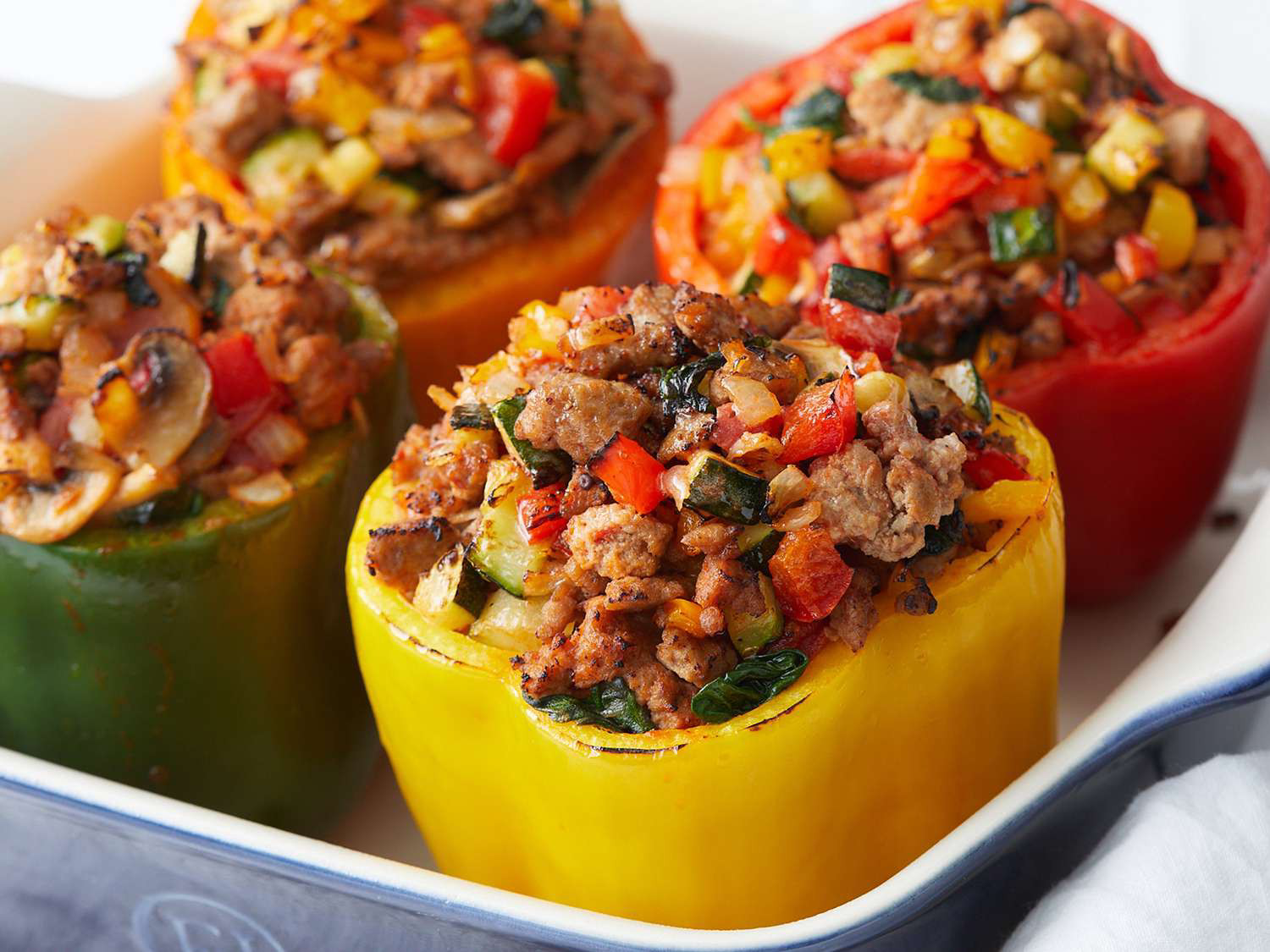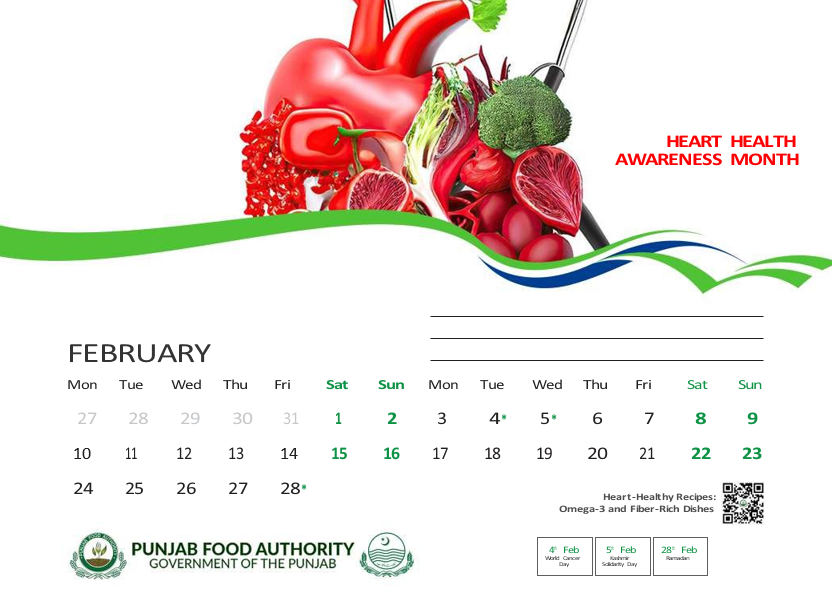
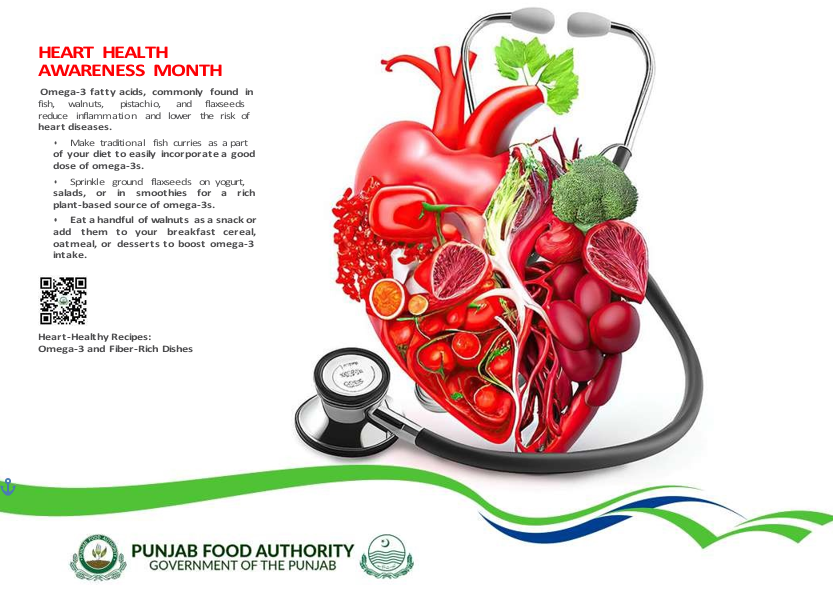
Heart Health
Heart Month theme encourages individuals to adopt healthy habits to reduce the risk of cardiovascular diseases. Good nutrition is a key as it helps to manage weight, blood pressure, and cholesterol levels. A heart-friendly diet includes fruits, vegetables, whole grains, nuts, and lean proteins while limiting saturated fats, transfats, sodium, and added sugars. Eating healthy fats like those in olive oil, almonds and walnuts along with reducing processed foods, supports a strong cardiovascular system and lowers the risk of heart diseases.
Recipe 01: Grilled Fish
This recipe contains omega-3 fatty acids that helps in promoting heart health, reducing inflammation, supporting digestion and cholesterol management.
Approximately Calories: 240 – 260Kcals Ingredients:
- 1 Fish fillet (4 ounces)
- 1 tbsp olive oil
- Few drops Lemon juice
- 1tsp Ginger& Garlic Paste
- 1tsp Black pepper
Method:
- Preheat a grill or pan.
- Season the Fish with lemon juice, ginger &.garlic paste, and black pepper.
- Grill the fish for 10- 15 minutes per side until cooked through.
- Serve the grilled fish.
Benefits
It supports heart health and reduces inflammation, helps lower bad cholesterol levels.
References:
- Calder, P. C. (2006). “Polyunsaturated fatty acids and inflammation.” The Proceedings of the Nutrition Society, 65(1), 15-23.
- Harris, W. S., & Miller, M. (2014). “Omega-3 fatty acids and cardiovascular disease: A review.” Journal of Clinical Lipidology, 8(1), 44-57.
- Slavin, J. L. (2003). “Dietary fiber and cardiovascular disease: A review of the evidence from human intervention studies.” European Journal of Clinical Nutrition, 57(1), 44-52.
- Dhingra, D., & Tewari, R. (2014). “Health benefits of millet and its incorporation into the diet.” Journal of Food Science and Technology, 51(3), 480-486.
- de Lorgeril, M., Salen, P., & Martin, J. L. (2006). “Effects of olive oil on cardiovascular risk factors and health.” The American Journal of Clinical Nutrition, 83(6), 1054-1065.
- Olive oil and prevention of coronary heart disease: A systematic review and meta-analysis.” European Journal of Clinical Nutrition, 2013, 67(4), 442–449.

Recipe 02: Chia Seeds pudding
This chia pudding is a nutrient-rich option, offering omega-3 fatty acid for heart health, fiber for improved digestion, stable insulin spikes throughout the day, and healthy fats for cardiovascular protection, making it an excellent choice for a balanced snack or breakfast.
Calories: 330 Kcals
Per serving calories: 165 kcals Ingredients:
- 3 tbsp chia seeds
- 1 cup milk
- 1 tsp honey (optional)
- 6 chopped almonds chopped
Method:
- Mix chia seeds and milk in a bowl. Add honey if desired.
- Refrigerate overnight or for at least 4 hours until thickened.
- Top with almonds before serving.
Benefits:
- This is rich in ALA, beneficial for heart health, support digestion and blood sugar control, provide monounsaturated fats that protect the heart.
- The high fiber content from chia seeds aids digestion, promotes bowel regularity, and supports gut health by acting as a prebiotic, which helps maintain healthy gut flora.
- The antioxidants in chia seeds and honey help reduce inflammation in the body, which is a key contributor to heart disease. Lowering inflammation can protect the blood vessels and heart from damage.
References:
- Li, Y., Zhang, J., & Wang, J. (2013). Omega-3 fatty acid content and health benefits of chia seeds (Salvia hispanica L.). Journal of Food Science, 78(7), C1009–C1013.
- Banel, D. K., & Hu, F. B. (2009). Effects of walnut consumption on blood lipids and blood pressure: A meta-analysis and systematic review. The American Journal of Clinical Nutrition, 90(1), 56-63.
- Sabaté, J., & Wien, M. (2010). Nuts and health outcomes: New insights and clinical perspectives. Nutrition Reviews, 68(9), 513-521.
- McRae, M. P. (2018). Health benefits of chia seeds: A review of the literature. Journal of Clinical Medicine, 7(10), 56.
- Zabel, B. L., & McCann, C. M. (2016). The role of fiber in the management of blood glucose in patients with type 2 diabetes. The Journal of Clinical Nutrition, 101(5), 1150-1157

Recipe 03: Nutri-Boost Oats
This oatmeal provides omega-3 fatty acids for heart health, fiber for cholesterol and blood sugar management, and sustained energy, making it a nutritious and energizing breakfast choice.
Calories per serving:(approximately)300 – 340 kcals
Ingredients:
- ½ cup rolled oats
- 1 tbsp grounded flaxseeds
- 1 medium banana
- 1 cup milk
- 1 tbsp cinnamon powder
Method:
- Cook oats with milk over medium heat, stir occasionally.
- Once thickened, stir in grounded flaxseeds and cinnamon.
- Top with banana slices and serve warm.
Benefits:
- This support heart health and reduce LDL cholesterol, help manage cholesterol and blood sugar levels, A nutrient-dense breakfast for sustained energy.
- Milk provides calcium, which plays a role in maintaining proper blood vessel function and regulating blood pressure, further supporting cardiovascular health.
- The natural sugars in bananas provide a quick energy source, while their fiber content helps maintain stable blood sugar levels, contributing to heart health.
- Cinnamon can help regulate blood sugar levels, preventing spikes that could lead to heart disease, especially in people with diabetes.
References:
- A review in Nutrients highlights that flaxseed oil is rich in alpha-linoleic acid (ALA), a type of omega-3 fatty acid that has been shown to help lower LDL cholesterol and support cardiovascular health (Feng et al., 2020).
- The American Heart Association confirms that oat fiber, especially beta-glucan, plays a crucial role in reducing LDL cholesterol levels and improving heart health (Keenan et al., 2017).
- A review in Frontiers in Nutrition discusses how balanced, nutrient-dense breakfasts, which include high-fiber foods like oats and fruits like bananas, can provide sustained energy and improve overall metabolic function (Huang et al., 2020).
- The Journal of Clinical Lipidology reviewed several clinical trials and concluded that flaxseed supplementation reduces LDL cholesterol levels, making it a heart-healthy food (Ried et al., 2010).
- A review in Nutrients noted that the soluble fiber in bananas helps in regulating blood glucose levels by delaying gastric emptying, which helps prevent rapid spikes in blood sugar after meals (Slavin, 2013).

Recipe 04: Lentil and Vegetable Soup
This lentil soup offers plant-based protein and fiber for cholesterol management, antioxidants from carrots and tomatoes and cumin for better digestion making it a flavorful and health-boosting meal.
Calories 4 servings: 490 kcals per serving: 130 kcals
Ingredients:
- 1 cup red lentils
- 1 carrot (diced)
- 2-3 leaves of lettuce
- ½ cup peas
- ½ cup baby corn
- 1 garlic clove (minced)
- 1 tsp cumin
- 1 tbsp olive oil
- 4 cups vegetable broth
- Salt to taste
- 1 tsp black pepper
Instructions:
- Heat olive oil in a pot and sauté cumin, garlic, carrot, baby corn, peas and lettuce for 5 minutes.
- Add water and boil the vegetables. And the lentils.
- Add salt and black pepper.
- Bring to a boil, then reduce heat and simmer for 25 minutes until lentils are tender.
- Serve warm.
Benefits:
- This is rich in plant-based protein and fiber, helping to manage cholesterol, supply vitamins and antioxidants like beta-carotene, supports digestion and has anti-inflammatory properties.
- The complex carbohydrates in lentils help regulate blood sugar levels, preventing spikes that can contribute to heart disease over time.
- It contains vitamins like vitamin A and folate, which help maintain proper heart function.
- Cumin helps with digestion, and a healthy digestive system supports overall heart health
References:
- Anderson, J. W., Baird, P., Davis, R. H., Ferreri, S., Knudtson, M., & Koraym, A. (2009). Health benefits of dietary fiber. Nutrition Reviews, 67(4), 188–203.
- Sievenpiper, J. L., et al. (2009). Effect of legumes as part of a diet on cholesterol levels: A systematic review and meta-analysis. The Journal of Nutrition, 139(1), 144-151.
- Kong, J., Goh, N. K., & Nakanishi, H. (2010). Antioxidant properties of beta-carotene in carrots. Journal of Agricultural and Food Chemistry, 58(24), 12610–12615.
- Rao, A. V., & Agarwal, S. (2000). Role of antioxidant lycopene in cancer and heart disease. Nutrients, 4(5), 115–121
- Sharma, S. S., et al. (2015). Anti-inflammatory effects of cumin (Cuminum cyminum L.): A review. Journal of Ethnopharmacology, 175, 188–197.
- Hosseini, S. M., et al. (2013). Effect of cumin (Cuminum cyminum L.) seeds on digestive functions. Food Research International, 52(1), 234–240.
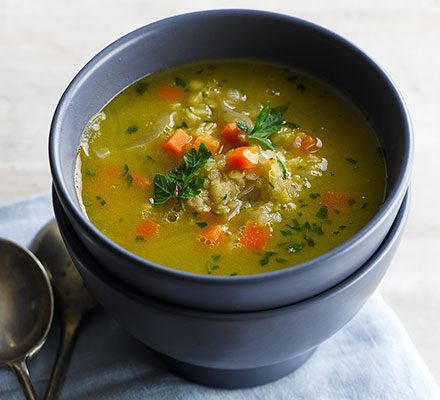
Recipe 5: Pumpkin and Lentils Curry
This dish supports heart health by improving cholesterol levels, reducing inflammation, lowering blood pressure, and providing antioxidants that protect the cardiovascular system.
Calories 2 Servings 280-300 kcals
per serving: 130-150 Kcals
Ingredients:
- 1 cup diced pumpkin
- 1/2 cup cooked lentils (chana daal)
- 1 tbsp olive oil
- 1/2 cup milk
- ½ tsp turmeric
- ½ tsp cumin
- 1 garlic clove (optional, minced)
- 1/2 tsp grated ginger
- ½ tsp red pepper
- Salt to taste
Method:
- Boil the lentils until it cook.
- Heat a pan over medium heat. Add 1 tbsp. of olive oil for sautéing.
- Add minced garlic and grated ginger, cooking for 1-2 minutes until aromatic.
- Add all species and mix well to cooked lentil evenly.
- Cover the pan and cook for 10-12 minutes until the lentils becomes tender.
- Add diced pumpkin Simmer until the flavors meld together.
- Taste and adjust seasoning with a pinch of salt or a squeeze of lemon juice.
- Serve hot with brown rice or whole-grain bread.
Benefits:
- This dish is Rich in beta-carotene, which converts to vitamin A in the body, supporting arterial health and reducing inflammation. Fiber content aids in cholesterol reduction. A powerhouse of plant-based protein, potassium, and folate, they lower blood pressure and promote heart health.
- Pumpkin is rich in potassium, which helps regulate blood pressure by counteracting the effects of sodium in the body, reducing the strain on the heart.
- The monounsaturated fats in olive oil help lower bad cholesterol (LDL) and reduce the risk of cardiovascular disease. These healthy fats also improve heart health by reducing inflammation in the blood vessels.
- Fiber helps reduce LDL (bad cholesterol) levels and improves overall cholesterol profile, which can lower the risk of heart disease.
Reference:
- Reference: Krinsky, N. I., & Johnson, E. J. (2005). Carotenoid actions and their relation to health and disease. Nutrition Reviews, 63(2), S1-S5.
- Al-Soqeer, A., Al-Mandeel, H., & Al-Mulhim, K. (2018). The role of beta-carotene and other antioxidants in cardiovascular disease prevention. Journal of Clinical and Diagnostic Research, 12(7), OC10-OC14.
- Tamez, M., & Le, T. (2012). Legumes, beans, and peas: Heart-healthy foods. Journal of Cardiovascular Nutrition, 21(4), 330-338.
- Mente, A., Dehghan, M., & Rangarajan, S. (2019). Association of dietary pulses with cardiovascular risk factors: A systematic review and meta-analysis. Canadian Journal of Cardiology, 35(9), 1184-1194.
- Siri-Tarino, P. W., Sun, Q., & Hu, F. B. (2010). Saturated fat, carbohydrate, and cardiovascular disease. American Journal of Clinical Nutrition, 91(3), 502-509.
- Sahebkar, A., & Serban, C. (2016). Curcumin supplementation in the management of cardiovascular disease: A systematic review and meta-analysis. Molecular Nutrition & Food Research, 60(1), 17-27.
Mahdavi, R., & Rezaei, M. (2015). Effect of cumin supplementation on blood pressure, lipids, and weight in hypertensive patients: A randomized controlled trial. Clinical Nutrition, 34(6), 1040-1045.
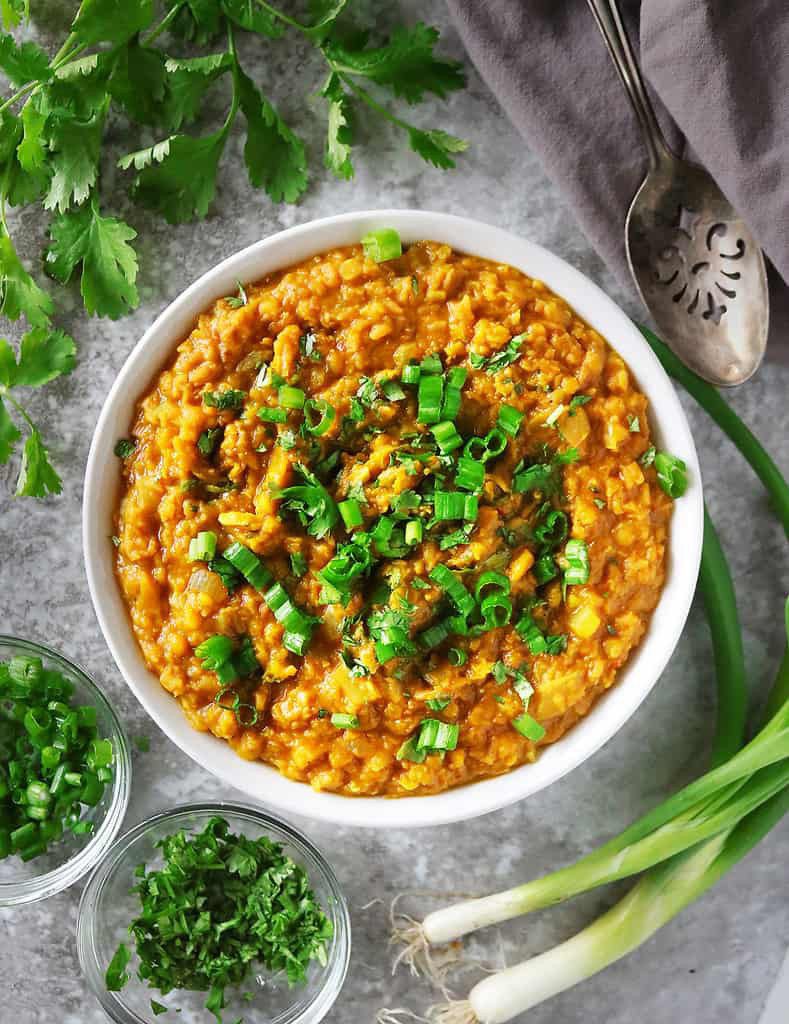
Recipe 6: Stuffed Vegetable capsicum
This dish contributes to a heart-healthy diet by reducing inflammation, supporting healthy cholesterol and blood pressure levels, improving circulation, and providing essential nutrients like fiber, antioxidants, and healthy fats.
Calories 2 servings 340 kcals
per serving: 170 kcals approximately Ingredients:
- 2 capsicum, halved and seeds removed
- 1 cup mixed vegetables (carrots, peas, corn)
- ½ cup shredded chicken
- 1 tbsp olive oil
- 1/2 tsp paprika powder
- 1/2 tsp garlic powder
- 1/4 tsp black pepper
- Salt to taste
Method:
- Preheat your oven to 180°C (350°F).
- Lightly brush the inside of the halved Capsicum with olive oil and place them on a baking sheet.
- In a pan, heat the remaining olive oil over medium heat. Add the mixed vegetables and sauté for 3-5 minutes until slightly softened.
- Sautéed vegetables. Add paprika, garlic powder, and black pepper, and mix well.
- Spoon the vegetable and chicken mixture into the halved Capsicum, pack it gently.
- Bake them in the oven for 20-25 minutes until the Capsicum are tender and slightly roasted on the edges.
- Serve hot.
Benefits:
- This dish is high in vitamin C, which strengthens blood vessels and improves arterial function. A combination of fibre, antioxidants, and vitamins supports cholesterol management and overall heart health.
- The mixed vegetables (carrots, peas, corn) and capsicum (bell peppers) are high in fiber, which helps to lower LDL (bad cholesterol) levels and regulate blood sugar. Fiber also supports healthy digestion and can reduce the risk of heart disease by improving cholesterol levels and controlling blood pressure.
- Shredded chicken, especially if it’s lean, is a great source of protein, which supports muscle function, including the heart muscle. Protein is also essential for repairing tissues and maintaining a healthy blood vessel structure, promoting cardiovascular health.
Reference:
- Zeng, C., Li, J., & Chen, L. (2015). The effect of vitamin C on endothelial function: A systematic review and meta-analysis. The Journal of Clinical Endocrinology & Metabolism, 100(1), 60-69.
- Li, W., & Zhang, Z. (2016). Capsicum (bell pepper) and its protective effects in cardiovascular diseases. Food & Function, 7(4), 1586-1596.
- Li, W., & Zhang, Z. (2016). Capsicum (bell pepper) and its protective effects in cardiovascular diseases. Food & Function, 7(4), 1586-1596.
- Hamer, M., & Chida, Y. (2009). Vegetable and fruit consumption and risk of cardiovascular disease: A meta-analysis of prospective cohort studies. Public Health Nutrition, 12(7), 1063-1070.
- Lopez-Miranda, J., & Pérez-Jiménez, F. (2010). Olive oil and cardiovascular risk factors. American Journal of Clinical Nutrition, 91(2), 329-335.
Schwingshackl, L., & Hoffmann, G. (2014). Olive oil consumption and risk of cardiovascular disease: A systematic review and meta-analysis. Molecular Nutrition & Food Research, 58(1), 3-11.
